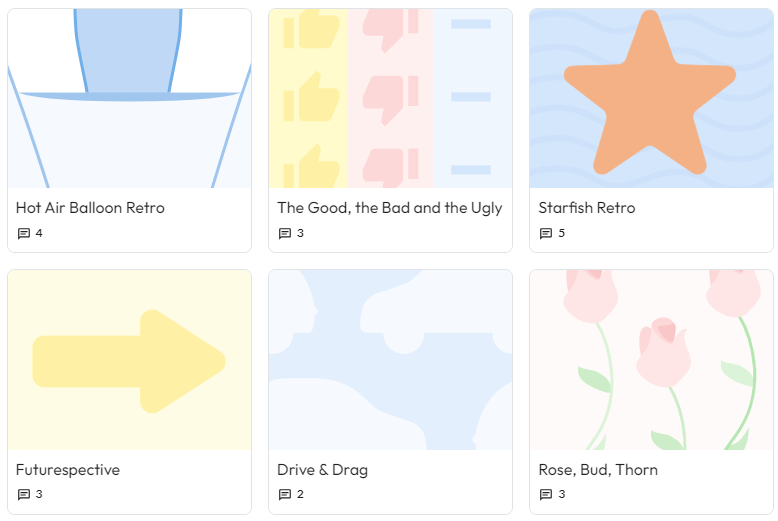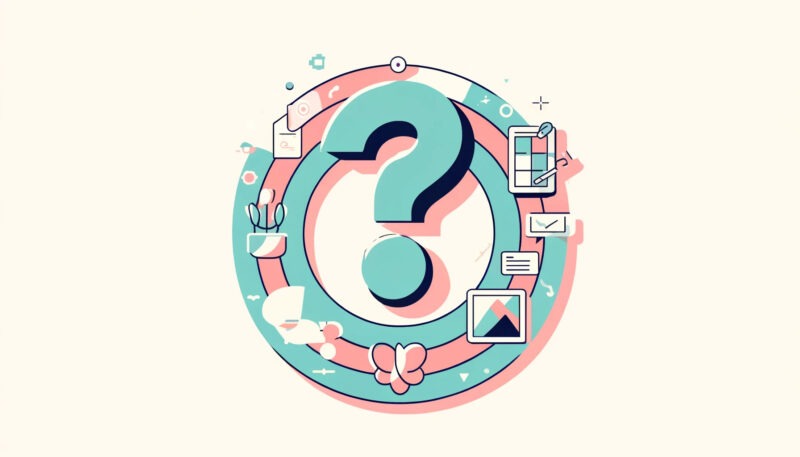Are you looking for "4l retrospective examples"? Then you have landed at the right place🎉
I'll explain here how the 4l retrospective works and give you some more examples👀.
4L Retrospective
The 4L Retrospective – A brief overview:
First things first: the name 4L Retrospective comes from the 4 questions asked in the retrospective, namely:
👉🏽"Liked" (What did the team like about the last sprint?).
👉🏽"Lacquered" (What were the deficits in the last sprint?).
👉🏽"Longed for" (What things did the team ask for that are not yet available?).
👉🏽"Learned" (What did the team learn in the last sprint?).
4L Retrospective Examples
There is always more than one perspective
You came here not only for the questions, but also for some examples of the 4L Retrospective. So let's take a closer look at these questions🔍
If you want to try this retrospective or any of 50+ other templates for free, you can do so in our agile team continuous improvement tool:
Open Feedback Questions
Like: What did you like?
Learned: What did you learn?
Lacked: What did you lack?
Longed for: What did you long for?
👉🏽Liked
The first question is pretty easy to answer. Or is it not?
In fact, there's more to this one word than meets the eye. At least that's what the retrospectives have shown where I've used the 4L retrospective✅.
If you look closer, it's not just about what you liked about the last sprint, but whether you liked things during the sprint.
What I mean exactly is that things always seem different in retrospect than during the sprint. And that's exactly what I want to encourage team members to reflect on in this retrospective💭.
Were there things that you liked during the sprint that might not seem so exciting now? Were there things that seemed unremarkable during the sprint but in retrospect led to a positive development? Or is it the case that the perception of positive events during the sprint and after the sprint coincide?🌞
Seems pretty complicated considering this is just a "Liked" question. However, for me, a good retrospective is to look at things from new perspectives.
4l Retrospective Examples "Liked":
💡During the sprint, I was excited about implementing the new feature in our software. Although it was fun, the impact seems to be quite modest.
💡I had a one-on-one conversation with one of the team members, and although at first it felt like it wasn't time well spent, it turned out to be very helpful for our teamwork over the last few days.
💡The pace of work in this sprint has felt very good and in hindsight I'm very pleased with how much we've achieved in the last two weeks.
👉🏽Lacked
When it comes to "Lacked", the question is: "What deficits did we have during the sprint?".
This refers to the fact that something was missing in the last sprint. A thing or circumstance that could have been produced and should also be produced in the coming sprint cycle⭕.
4l Retrospective examples "Lacked":
💡Due to my poor time management, I felt very stressed when it came to the amount of tasks I had to complete.
💡We introduced some new features that we didn't know exactly what they were for. That was very frustrating.
👉🏽Longed for
Even though the terms "Lacked" and "Longed for" seem very similar at first glance, there is a big difference between them👀
"Lacked" refers more to the things that have been missing and that you can change in the short term.
"Longed for", on the other hand, refers to the things you and your team would like to see in the future and work towards. So the real question behind " longed for" is "What things has the team wished for that are not yet available?"🎁
4l Retrospective Example "Longed for":
💡Our ticketing and bug reporting is very unstructured. It would be nice if we could implement a clearer process for this in the future so that we can ensure higher quality and a faster pace.
👉🏽Learned
From my point of view, you can also look at the "learned" aspect from two different directions.
On the one hand, you can derive direct learnings from the sprint, but on the other hand, you can also learn from the previous points of the retro (Like, Lacked, Longed for).
That's also why I always like to put the question "What can we learn?" at the end of this retrospective🔚.
4l Retrospective Examples "Learned":
💡A clearer structure in communicating problems can ensure a higher standard of quality in implementation.
💡When problems arise between two team members, it's good to address them as soon as possible. This way, you can make sure that the problems don't drag on and only cause more inconvenience.
Conclusion – 4L Retrospective⚡
As you can see from the 4L retrospective examples, this retrospective can be much more than just 4 simple questions.
I don't want to make the questions more complicated than they are, but it's still important to take advantage of the depth this retrospective has to offer🏆
To ensure this, it is very useful to explain the 4L's in more detail to your team members or to be more specific about the questions behind the 4L's. Like in the example "Longed for" -> "What things has the team asked for that are not yet available?"
Do you want to start your first DAKI retrospective right away? Then try our Echometer tool for continuous improvement of agile teams🚀








